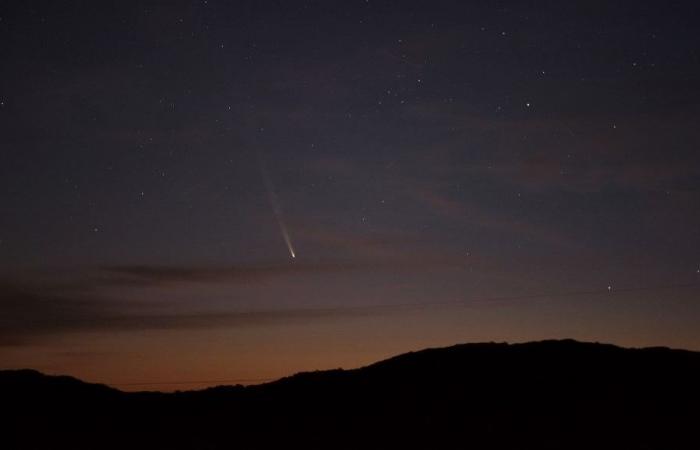
After the northern lightsthe skies of France are preparing to welcome a new celestial spectacle. Starting this Saturday evening, comet Tsuchinshan-ATLAS, nicknamed “the comet of the century”, will be visible to the naked eye above our heads for around ten days.
Looking towards the setting sun at dusk
To observe the comet, you will have to look towards the west, towards the setting sun. If the sky is clear, you should see a bright spot with a tail. The magazine Ciel et Espace has published a map to make it easier to find.
To be even more precise, if you know how to spot the Big Dipper, locate the tail of the constellation, you will find a very bright star in its extension, Arcturus. The comet will be located to the left of this star. Please note that you will have a better chance of seeing it at dusk because the higher the comet is in the sky, the more it will lose light intensity, as astrophysicist Eric Lagadec explains on his X account.
Comet Tsuchinshan-ATLAS will be visible from the entire Northern Hemisphere on Saturday evening and for around ten days, continuing its journey started millions of years ago.
It almost disappeared because of the Northern Lights
This comet returns to the sky of the Northern Hemisphere after crossing the Sun. This small body of rock and ice, detected only in January 2023, almost disappeared, in particular because of the solar storm which reached Earth on Thursday, causing the magnificent northern lights visible from the sky of France. Visible to the naked eye in the Southern Hemisphere in September, C/2023 A3, its rigorous nomenclature, was seen again Friday evening in North America, reports Eric Lagadec, astrophysicist at the Observatory of the Côte d’Azur (southern France). In the meantime, “it could not be observed when it was between the Earth and the Sun“, with whom she risked disappearing.
When comets approach our star, the ice contained in their core sublimates and releases a long trail of dust, reflecting sunlight. It is then said that the comet degases, with the formation of a characteristic hair, the coma, sometimes at the risk of disintegrating. Barring obstacles on its route modifying the trajectory, Tsuchinshan-ATLAS follows an orbit which should not bring it closer to the Earth before 80,000 years, specifies this comet specialist. Based on the comet’s orbit and certain models, it is estimated that it could have been up to 400,000 times the Earth-Sun distance before reaching us. A journey counting in millions of years for this comet which probably saw the light of day in the Oort cloud, a hypothetical and gigantic assembly of tiny planets and celestial bodies, at the edge of the solar system.





